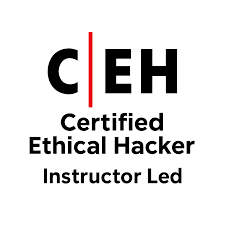Palo Alto Training – Learn Palo Alto Firewalls in 2025

Network scanning is a critical proactive step to identify vulnerabilities before attackers exploit them. Using port scanning techniques and tools like an Nmap tutorial, admins can detect open port detection and unsecured services. In 2025, with rising threats, vulnerability scanning tools like Nessus vulnerability scan and OpenVAS usage are essential for network penetration testing. From stealth scanning methods to network enumeration, this process uncovers zero-day network exploits and misconfigurations. This article explores network mapping […]

Network scanning is a critical proactive step to identify vulnerabilities before attackers exploit them. Using port scanning techniques and tools like an Nmap tutorial, admins can detect open port detection and unsecured services. In 2025, with rising threats, vulnerability scanning tools like Nessus vulnerability scan and OpenVAS usage are essential for network penetration testing. From stealth scanning methods to network enumeration, this process uncovers zero-day network exploits and misconfigurations. This article explores network mapping tools, real-world risks, and IP scanning best practices—including firewall evasion techniques and network security checklist—to secure your infrastructure.
Networks are the backbone of modern systems, but open ports and services are like unlocked doors. Network scanning reveals these via service discovery scanning and network device fingerprinting, spotting risks attackers could leverage. Without it, rogue device detection fails, and network traffic analysis misses threats like UDP scanning challenges. A network security audit catches outdated systems prone to zero-day network exploits. For organizations, it’s about preventing breaches; for security pros, it’s a race to apply network scanning prevention before malicious scans—like those using TCP SYN scan—strike first.
Here’s how network penetration testing exposes weaknesses, with key examples:
A real-world case: In 2022, attackers used port scanning techniques to find an open RDP port, leading to a ransomware attack costing millions. Network scanning automation helps stay ahead. Pricing Section: In 2025, certifications to master this include: CEH (2,000 € – 2,500 €), OSCP (2,100 € – 2,500 €), WAHS (500 € – 1,500 €), CISSP (800 € – 1,200 €), CompTIA Security+ (350 € – 400 €). WAHS covers network monitoring tools, while OSCP dives into firewall evasion techniques.
IP scanning best practices start with scanning and end with robust defenses. Here’s how:
For more, see Wikipedia or Gartner. The University of Rennes 1 offers relevant courses.
Network scanning locks doors before attackers like those using Nmap tutorial or Nessus vulnerability scan find them. From service discovery scanning to UDP scanning challenges, proactive steps beat reactive fixes. With network mapping tools and a network security checklist, you can outpace zero-day network exploits. Certifications like WAHS and OSCP arm you with network security audit skills. Explore cybersecurity certification training at SecureValley Training Center to secure your network today!
Get certified with industry-leading cybersecurity certifications from EC-Council, PECB, Palo Alto Networks, and more.

Learn from world-class instructors Collaborate with top professionals Advanced training...

The CEH is the world's leading cybersecurity certification, recognized by...

Onsite training course Led by an instructor Interactive sessions

Asynchronous, self-study environment Video-streaming format Flexible learning schedule
Adding {{itemName}} to cart
Added {{itemName}} to cart

